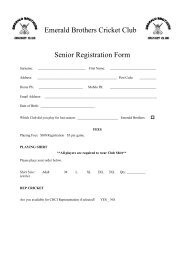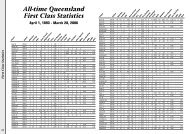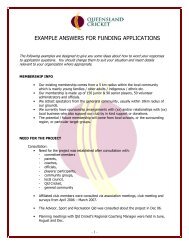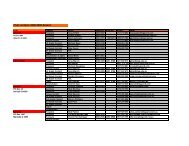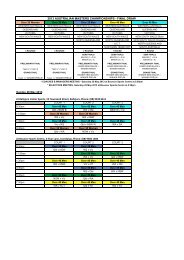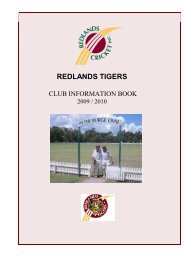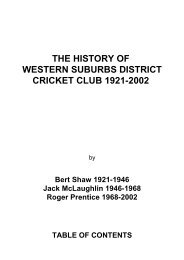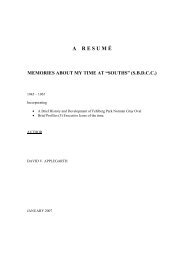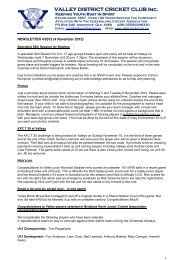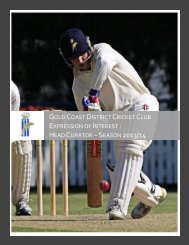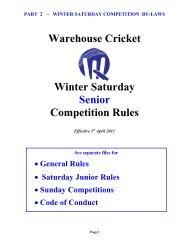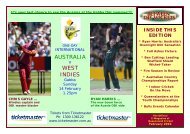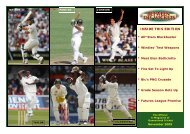QCSA Handbook on scoring 2010 - Queensland Cricket
QCSA Handbook on scoring 2010 - Queensland Cricket
QCSA Handbook on scoring 2010 - Queensland Cricket
- No tags were found...
You also want an ePaper? Increase the reach of your titles
YUMPU automatically turns print PDFs into web optimized ePapers that Google loves.
Other things that you can use your running sheet for might include:• bowlers’ spells, as opposed to their overall summary <strong>on</strong> thescorebook• breaks in play• progressive runs needed to achieve the target victory total.The main thing is to find a style that works for you. Before taking <strong>on</strong> thechallenge of keeping a running sheet at a game, when it may be adistracti<strong>on</strong> to your main <strong>scoring</strong> duties, practise with it in fr<strong>on</strong>t of a TVgame, or at a game where you are not the official scorer. Once you get usedto the rhythm of your chosen running sheet, introduce it to your normal<strong>scoring</strong> and it will eventually become sec<strong>on</strong>d nature. Start by keepingminimal informati<strong>on</strong> (e.g. the balls — who faced each ball, the progressiveballs faced for each batter and the innings balls), then gradually introduceother details such as minutes and sundries until you are comfortablekeeping all necessary informati<strong>on</strong>.In the example above, a blue X is used to denote balls not faced by individual batters inan over, corresp<strong>on</strong>ding with the balls faced by the batter’s partner. After a wicket, adiag<strong>on</strong>al line splits the boxes for the partnership balls, and the outgoing and newbatter. The new batter’s name is then written above the box for that over. Note alsothe circled 24 in the 4th over, showing the scorer has checked that the scores balance,and the extensi<strong>on</strong> <strong>on</strong> the right, keeping track of the target score required.This next example (above) shows a very different style of sheet. On this sheet, <strong>on</strong>ly theballs faced are recorded for each batter — there is no corresp<strong>on</strong>ding blue X for then<strong>on</strong>-striker. There are no columns for bowlers, but the ‘spare’ column <strong>on</strong> the far rightcan be used to record drinks breaks and other stoppages in play.64<strong>Queensland</strong> <strong>Cricket</strong> Scorers Associati<strong>on</strong>



